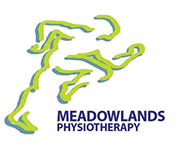Physiotherapy for Positional Plagiocephaly
Do you find your infant has their head tilted to one side frequently? Or, have you found a flat spot on the side or back of their head?
If so, your child may have positional plagiocephaly, potentially caused by a condition called torticollis in which the muscles of the neck are bent or twisted to one side. The good news is that a few simple physiotherapy exercises a day can correct the issue.
Learn how positional plagiocephaly develops and what you can do to alleviate the condition.
What is Plagiocephaly?
Plagiocephaly is more commonly known as “flat head syndrome”. As its name suggests, it occurs when a young infant’s head is flat on one side. There are many causes of plagiocephaly, including genetics, birth trauma, and being laid on their back for long periods of time. Torticollis may also cause plagiocephaly and in this case physiotherapy is the first treatment recommended to correct the problem.
What is Torticollis?
Congenital muscular torticollis is a condition that affects the muscles in an infant’s neck, causing them to be unbalanced or uncomfortable to move. There may be a benign tumor in one of your child’s neck muscles (specifically, the sternocleidomastoid muscle), or the muscles on one side of the neck may be shorter than the other.
Whatever the cause, torticollis makes it difficult for your child to turn their head in one direction. As a result, they may spend a lot of time with one side of their head on the ground. This side may become flat, or develop positional plagiocephaly.
How Can Physiotherapy Treat Torticollis and Positional Plagiocephaly?
Torticollis, and the positional plagiocephaly it causes, can be treated by physiotherapy. In fact, it is the first line of treatment. If your child’s condition does not respond to physiotherapy, they may need minor surgery to lengthen the shortened neck muscle. However, with early and frequent physiotherapy, your child can avoid surgery.
This type of physiotherapy is simple. As the caregiver of the child, you will simply massage your child’s neck and move their head a few times per day. A physiotherapist will instruct you on how to massage their neck and how to move their head.
These movements will gently stretch your child’s muscles to lengthen the short side. Or, you may use massage to work out the begin tumor, which is more like a knot in the muscle than a normal tumor.
Your infant may find these movements and massages to be uncomfortable at first. You should always work gently, and remember that your child will improve with time. Eventually, you should start to see your child’s head tilt subside and see them use the full range of motion in their neck.
Also, to target the positional plagiocephaly, it may be necessary to re-position your child during the day, or reorient their crib or seats so that they have to move their head in a new direction to see you or their toys. In order to reduce the chance of sudden infant death syndrome (SIDS), you should still position your child on their back to sleep.
If your child’s torticollis and positional plagiocephaly does not improve at six months of age, they may need new treatments. So, your first step should be to reach out to us at Meadowlands Physiotherapy to start early intervention with your child’s condition.

